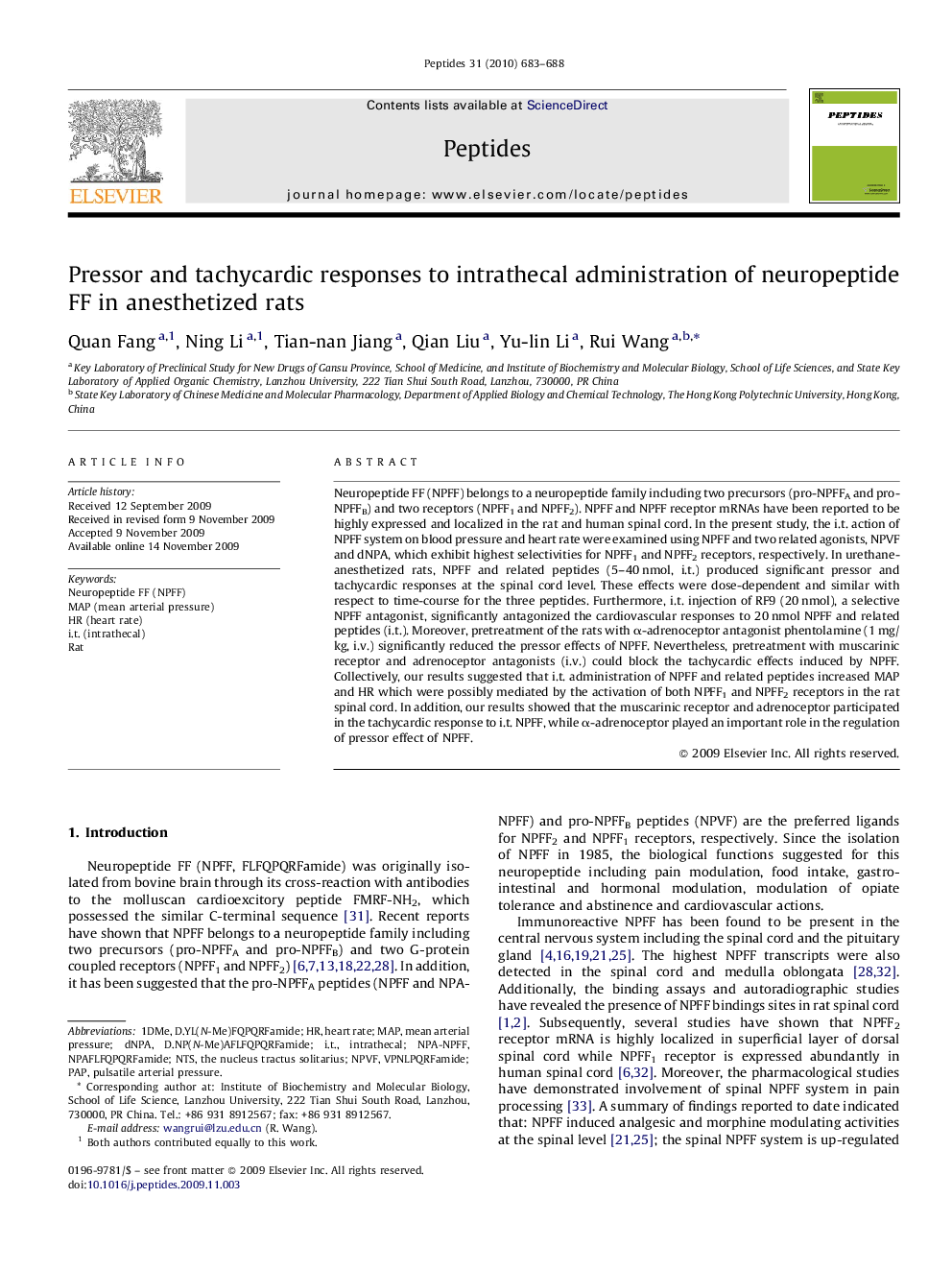| Article ID | Journal | Published Year | Pages | File Type |
|---|---|---|---|---|
| 2006896 | Peptides | 2010 | 6 Pages |
Neuropeptide FF (NPFF) belongs to a neuropeptide family including two precursors (pro-NPFFA and pro-NPFFB) and two receptors (NPFF1 and NPFF2). NPFF and NPFF receptor mRNAs have been reported to be highly expressed and localized in the rat and human spinal cord. In the present study, the i.t. action of NPFF system on blood pressure and heart rate were examined using NPFF and two related agonists, NPVF and dNPA, which exhibit highest selectivities for NPFF1 and NPFF2 receptors, respectively. In urethane-anesthetized rats, NPFF and related peptides (5–40 nmol, i.t.) produced significant pressor and tachycardic responses at the spinal cord level. These effects were dose-dependent and similar with respect to time-course for the three peptides. Furthermore, i.t. injection of RF9 (20 nmol), a selective NPFF antagonist, significantly antagonized the cardiovascular responses to 20 nmol NPFF and related peptides (i.t.). Moreover, pretreatment of the rats with α-adrenoceptor antagonist phentolamine (1 mg/kg, i.v.) significantly reduced the pressor effects of NPFF. Nevertheless, pretreatment with muscarinic receptor and adrenoceptor antagonists (i.v.) could block the tachycardic effects induced by NPFF. Collectively, our results suggested that i.t. administration of NPFF and related peptides increased MAP and HR which were possibly mediated by the activation of both NPFF1 and NPFF2 receptors in the rat spinal cord. In addition, our results showed that the muscarinic receptor and adrenoceptor participated in the tachycardic response to i.t. NPFF, while α-adrenoceptor played an important role in the regulation of pressor effect of NPFF.
